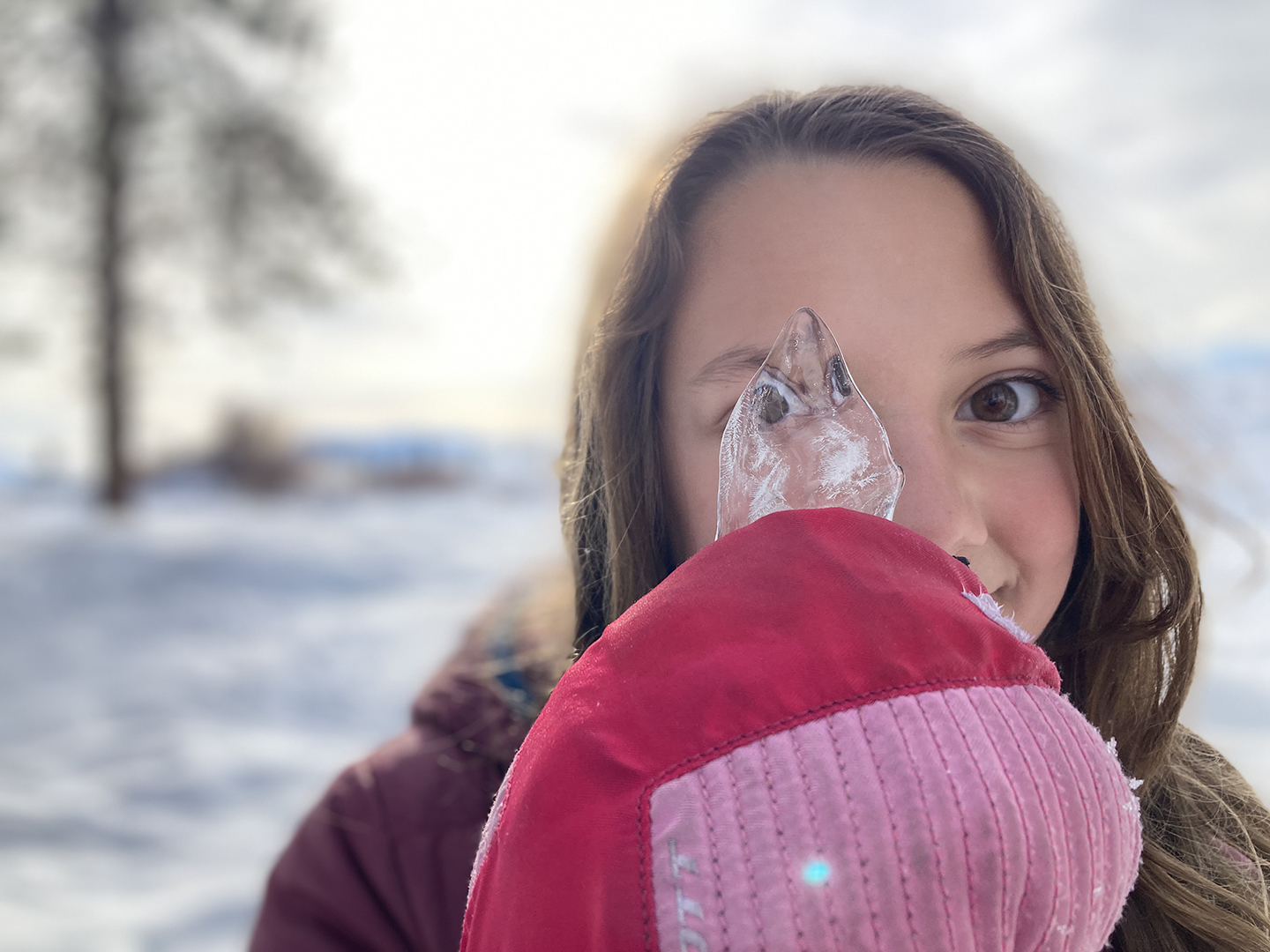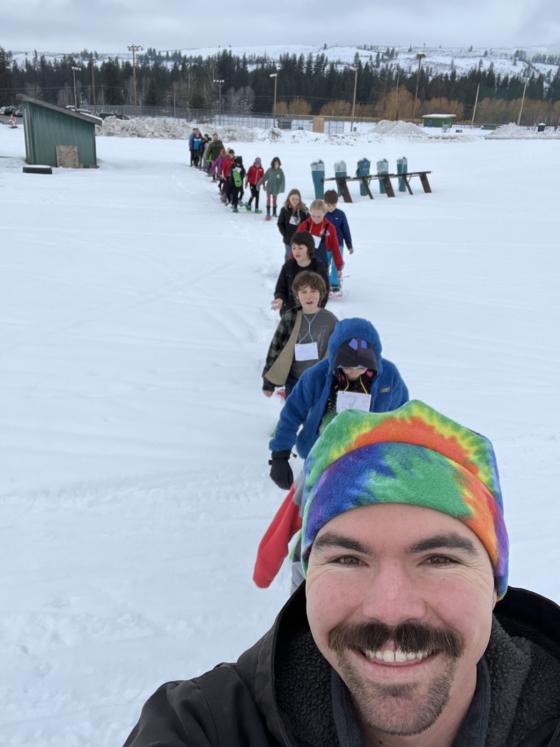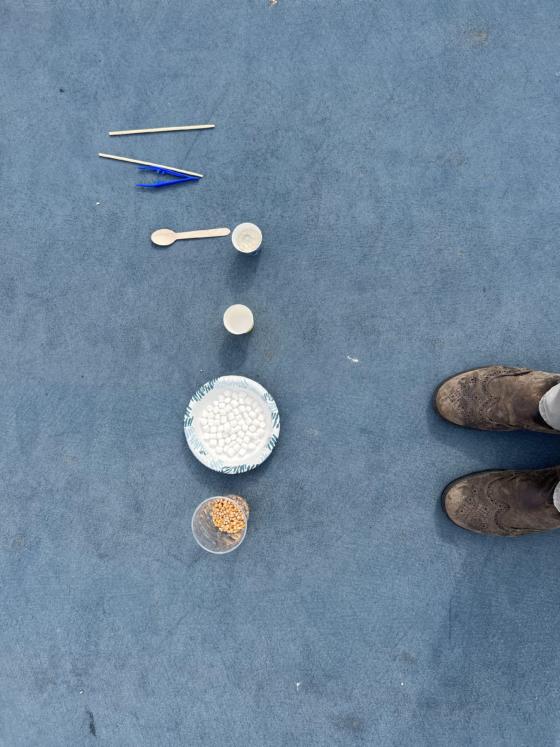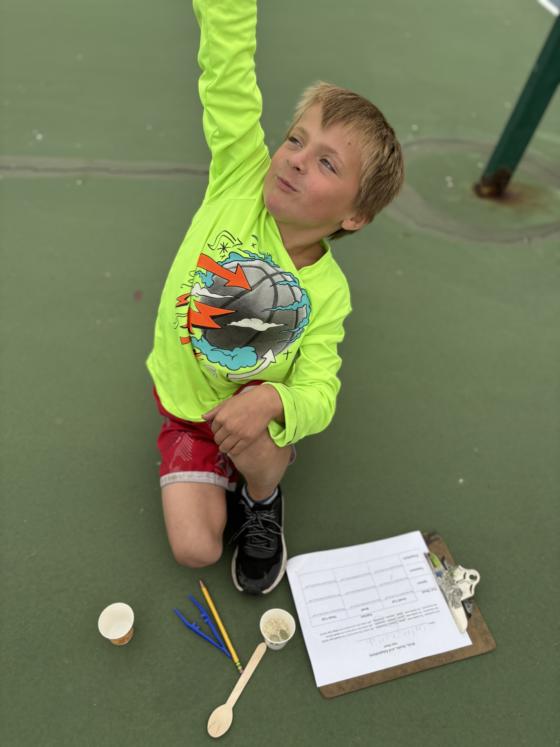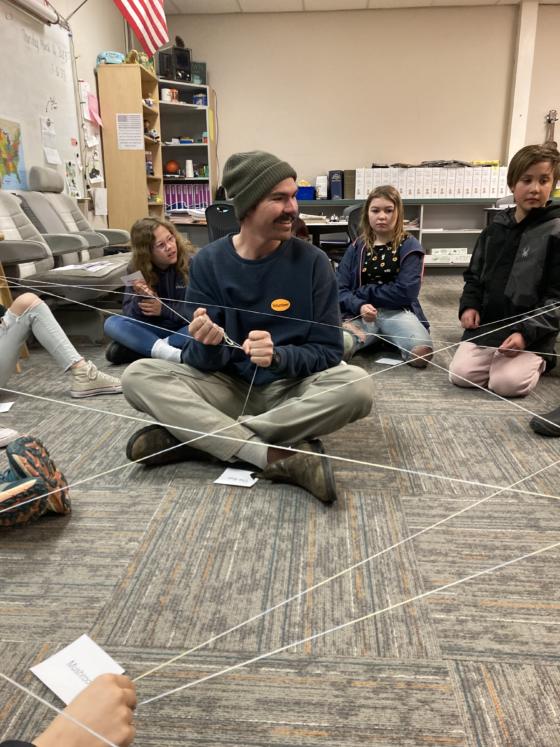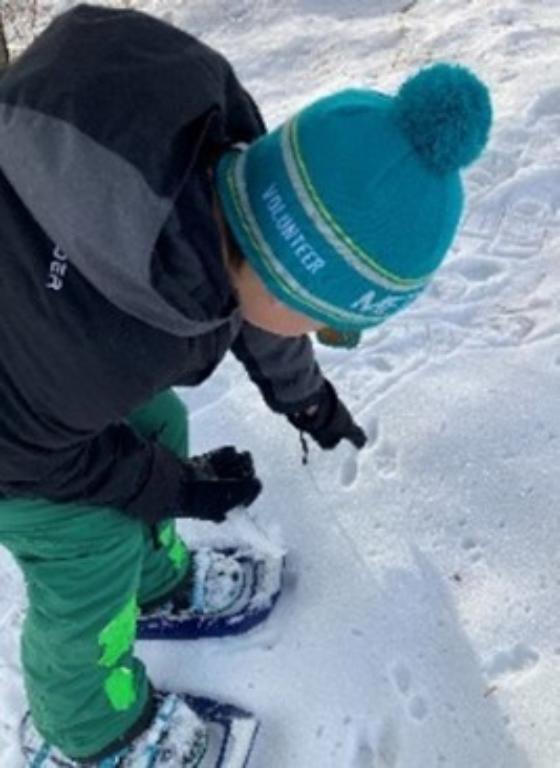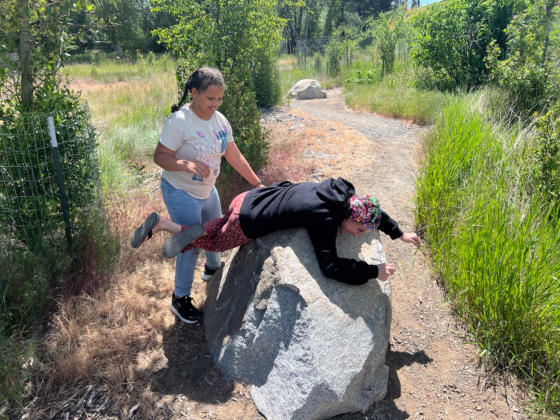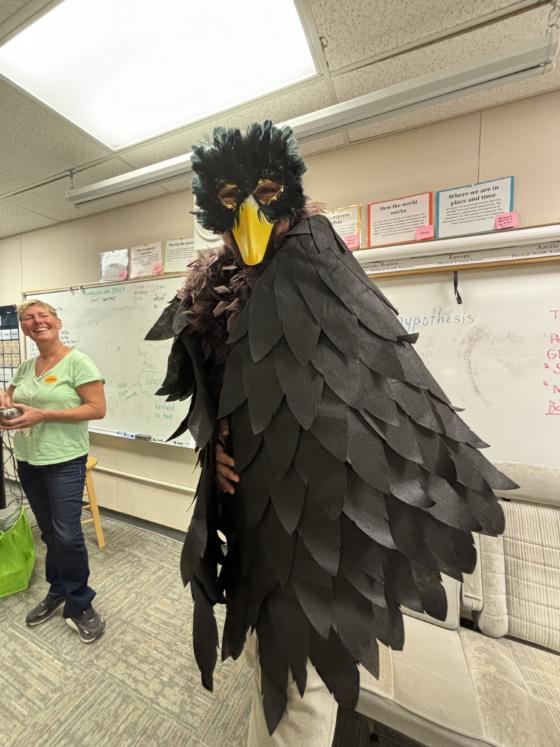Sample Lesson
The Who We Are Schoolyard Science lesson focused on birds and some of the unique adaptations that birds have to help them survive and help define "who they are."
What makes a bird a bird? Students defined characteristics that help birds survive: feathers, wings, beaks, feet, hollow bones, eggs, etc. First the focused on beaks. A bird's beak has several functions: gather/capture food, communicate, groom feathers, defend territory, attack rivals. Short, thick, cone-shaped beaks are great for crunching and cracking seeds; thin, chisel-type beaks help search out insects in trees; straight, pointed bills help spear prey like fish; straw-like beaks are necessary for sucking up nectar from flowers; and raptors have hook-like beaks to tear apart small prey like mice.
Then the students conducted a scientific experiment that showed how specialized beaks allow different bird species to eat different things. Using "beaks" like tweezers, chopsticks, and long-handled spoons, students visited "feeding environments" like small cups, paper bowls filled with water, and tall cups. After "eating" from these different feeding environments with their various beaks, students recorded how much they were able to "eat" , which habitat ended up being best for each beak, and whether or not that matched the hypothesis they had determined before the experiment.

